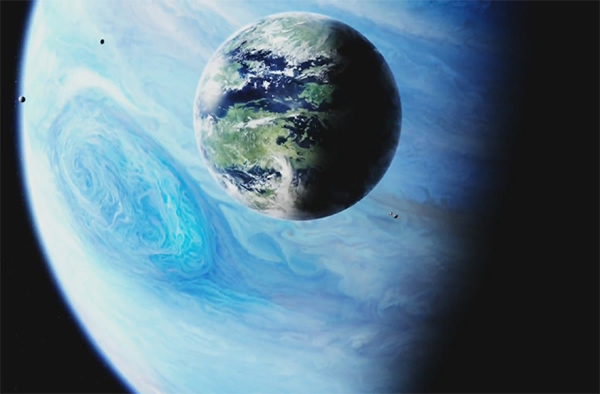'Smaller Than Earth'-Sized Exomoon Discovered?
The fictional exomoon of Pandora from the hit movie 'Avatar' orbits its host gas giant planet.
As the exciting quest to discover smaller and smaller exoplanets trundles on, over 1,000 of these alien worlds have been discovered to date. But as our instrumentation becomes more advanced and techniques more sophisticated, will we ever be able to spot the hypothetical moons in orbit around those exoplanets? Today, the answer appears to be “YES!” But like all science on the raggedy edge of discovery, more study is needed before a definitive discovery can be confirmed.
Frustratingly, the very nature of the technique used to discover this exomoon candidate prevents any further study of this interesting object.
Exomoons are the natural satellites that are thought to orbit planets orbiting other stars. It stands to reason that, although our rich and diverse solar system may not be a “typical” star system, other planets in other planetary systems should possess natural satellites like most planets in our solar system do.
Hunting exoplanets is hard, but how would astronomers go about hunting exomoons in orbit around those already-hard-to-find exoplanets? It sounds like a near-impossible task, but it’s a task that is slowly becoming more plausible.
Using an odd quirk of general relativity, astronomers are able to detect transient events when one star (or other celestial object like a massive planet) drifts in front of a more distant star. If the alignment is just right, the space-time bending gravitational field of the closest object (the “lens”) will focus the starlight of the more distant star from our perspective. This focusing effect causes a transient brightening known as a “microlens.”
To detect microlensing events, astronomers need to use survey telescopes that can monitor large swathes of sky. The lensing objects are usually undiscovered star systems that only give their presence away by their effect on amplifying starlight as they drift through the galaxy; events that occur randomly. But should the light from a microlens be detected and alerts sent out to collaborating telescopes quick enough, the “light-curve” of the event can be recorded and astronomers can deduce many physical characteristics of the lensing system.
Most recently, an exoplanet was discovered in the galactic bulge of the Milky Way (some 25,000 light-years away) orbiting within its star’s habitable zone — the first discovery of its kind. That object was spotted by three microlens surveys; the Microlensing Observations in Astrophysics (MOA — New Zealand/Japan), Optical Gravitational Lensing Experiment (OGLE — Poland) and Wise Observatory (Israel). Now, a detection by the MOA-II telescope at Mt. John University Observatory (MJUO) in New Zealand appears to have uncovered an exoplanet with an exomoon in orbit only 1,600 light-years from Earth in the direction of the Milky Way’s galactic bulge in the constellation Sagittarius. However, this particular exoplanet is a free-floating exoplanet with no host star.
MOA-2011-BLG-262 was a very short duration event detected on June 26, 2011 that appears to have been caused by a planet up to 4 times the mass of Jupiter and the companion moon is likely half the mass of Earth. The candidate exomoon is around 45 million kilometers (0.13 AU) from its host exoplanet. As a comparison, Jupiter’s most distant satellite (S/2003 J 2) orbits over 30 million kilometers from the gas giant, so such an extreme orbit around a larger planet is certainly feasible.
Sadly, as the amount of data collected from MOA-2011-BLG-262 was limited to that one event, there cannot be followup studies of the same system — although several telescopes were quickly alerted soon after MOA-2011-BLG-262 was detected.
The collaboration of researches, who published their results to the arXiv pre-print service, are being cautious about announcing the discovery of a small exomoon however. As the discovery would be unprecedented they have to consider other possibilities: Could, for example, the microlensing event actually have been caused by a star with exoplanet in tow (as opposed to a free-floating exioplanet and exomoon in tow), located much further away from Earth?
“Such a new discovery (of exoplanet and exomoon) would require strong evidence, so our favored model for this event is that it is a low-mass star or brown dwarf orbited by a planet of about Neptune’s mass,” the astronomers write.
But the exomoon evidence is tantalizing, a fact that will motivate intense scrutiny surveys that are becoming more and more sensitive to the presence of exomoons in microlensing light-curves.(Dec 23, 2013 01:29 PM ET // by Ian O'Neill)












